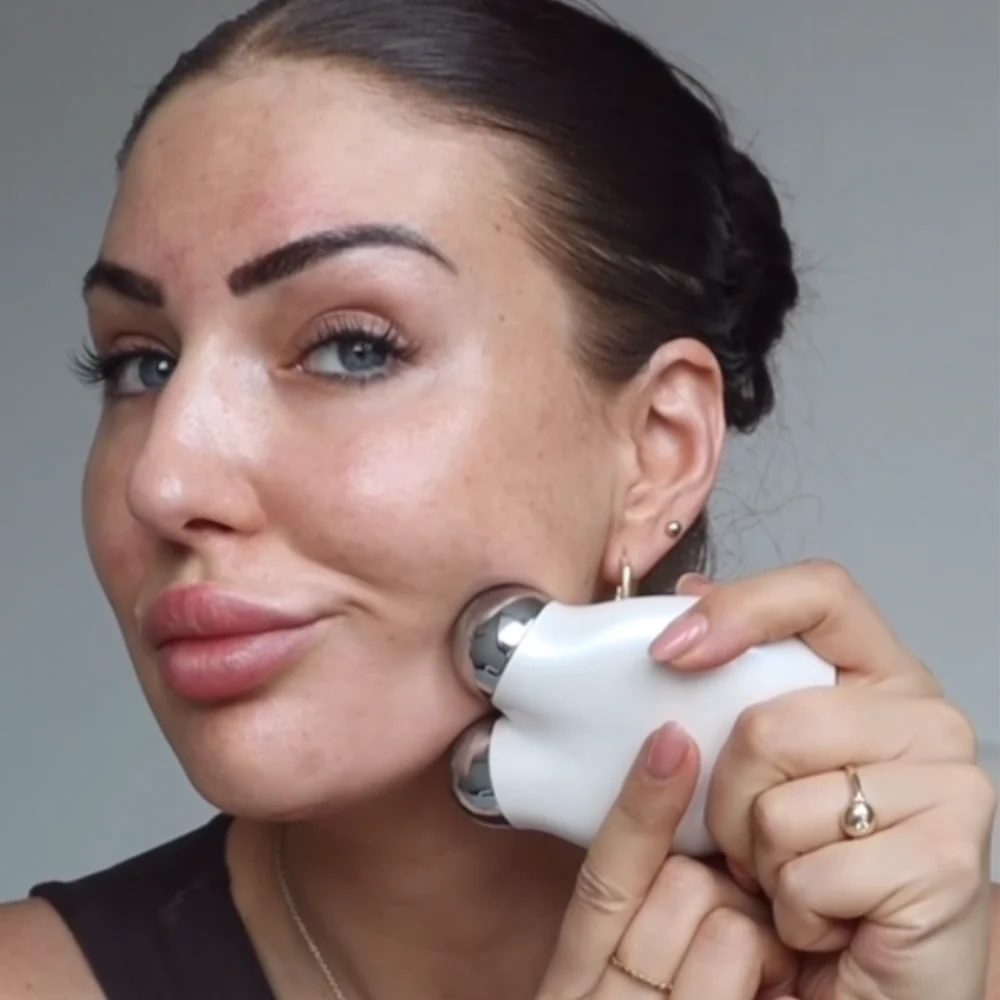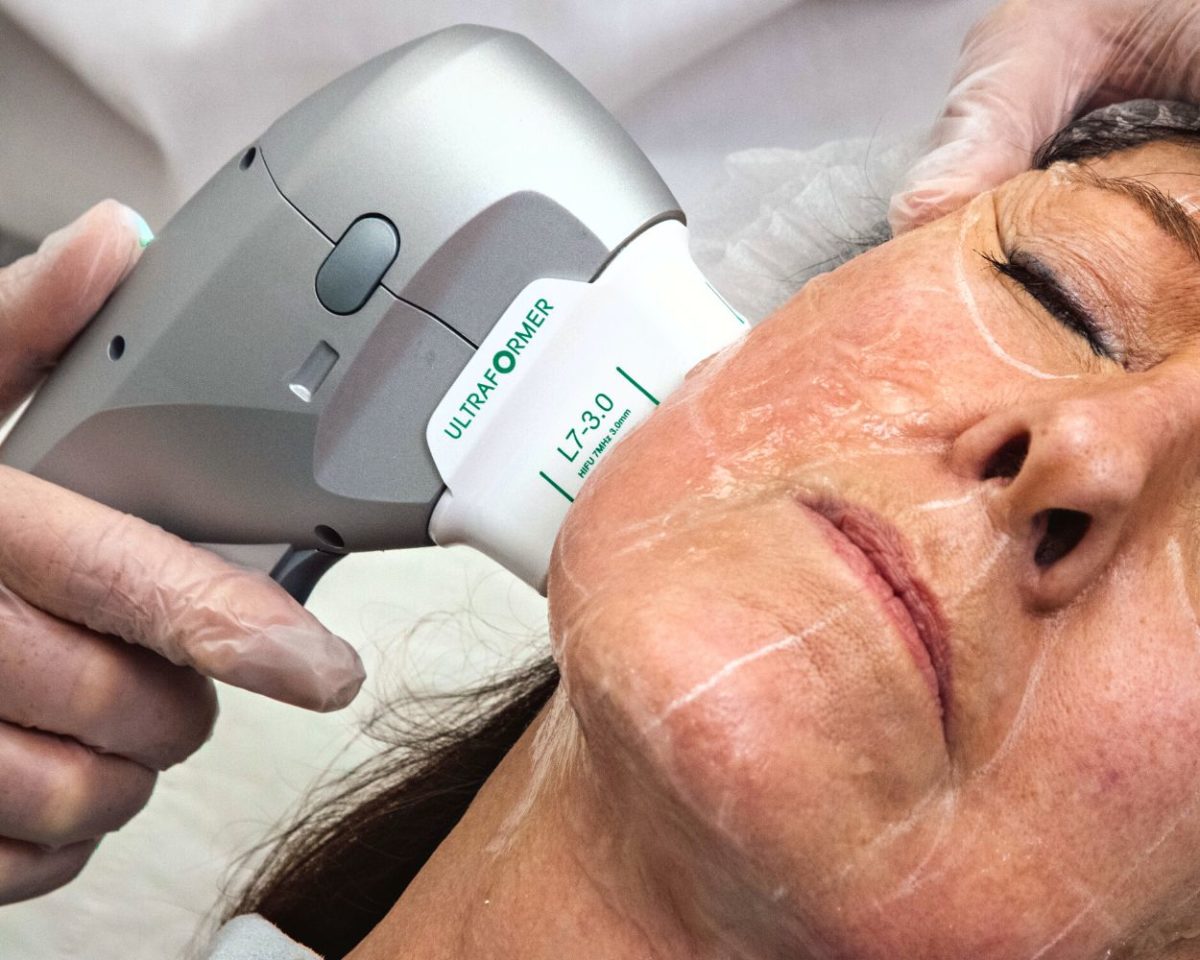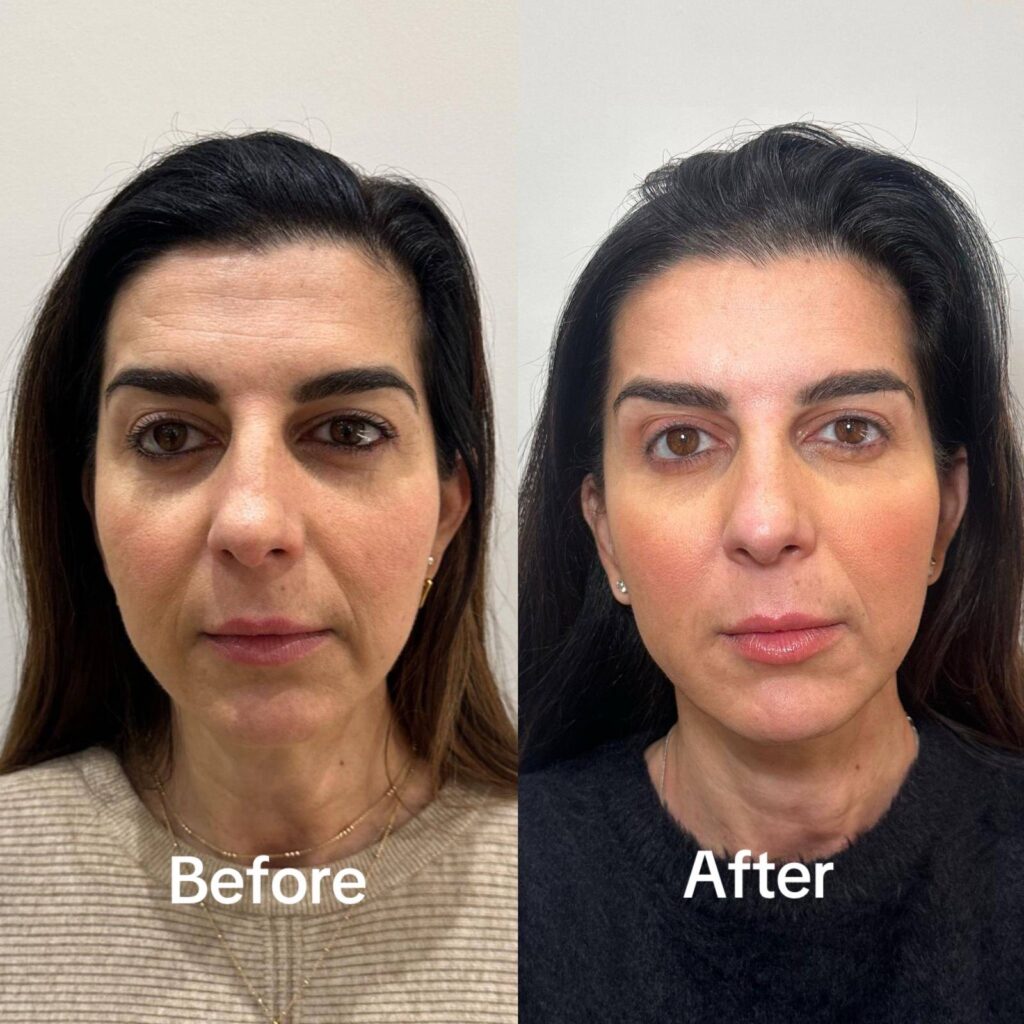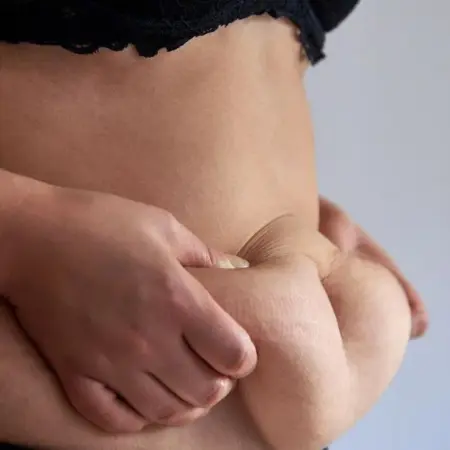If you’ve been looking for ways to lift and tighten your skin without surgery, you’ve probably heard about Microcurrent Facials and HIFU. Both are popular treatments, but they work very differently — and the results are not the same. When comparing Microcurrent Facial vs HIFU, it’s clear they work in different ways but both promise lifting and tightening.
In this guide, we’ll break down what each treatment does, how they work, and which one gives you better, longer-lasting results. By the end, you’ll know exactly which option is right for you!
Table of Contents

What is a Microcurrent Facial?
A Microcurrent Facial is a non-invasive skin treatment that uses very low electrical currents to stimulate your facial muscles. Think of it like a gentle workout for your face!
During the treatment, tiny electric pulses help tone and tighten the skin, giving you a mild lifting effect. Many people call it a natural facelift because it lifts the face slightly without any needles or downtime.
However, the results are usually temporary — you may need multiple sessions to maintain the lift. It’s great for a quick glow-up or before a special event, but it doesn’t reach deeper skin layers.

What is HIFU?
HIFU stands for High-Intensity Focused Ultrasound. It’s an advanced, non-surgical treatment that lifts and tightens your skin from deep inside — without cuts or needles.
HIFU uses focused ultrasound energy to target the deeper layers of your skin, including the same layer doctors tighten during a facelift. This energy stimulates collagen production, which naturally lifts and firms your skin over time.
Unlike a microcurrent facial, HIFU results last much longer — usually 6 to 12 months or more. Most people need only 1–2 sessions a year to maintain the lift. It’s ideal for people who want visible, long-lasting tightening without surgery.
How Does a Microcurrent Facial Work?
During a Microcurrent Facial, your skin specialist uses a handheld device that sends tiny electrical currents into your skin. Don’t worry — it’s completely safe and painless!
These mild currents wake up your facial muscles, helping them contract and tighten — just like a mini workout for your face. This improves blood circulation too, which gives your skin a fresh, healthy glow.
A single session usually takes 30–60 minutes, and you can go right back to your day — no redness, no downtime.
However, because the treatment is gentle, the lift is temporary. Most people need multiple sessions, and regular maintenance every few weeks to keep the results.
How Does HIFU Work?
HIFU works very differently from a microcurrent facial. Instead of tiny currents, HIFU uses focused ultrasound waves to reach deep under your skin — even down to the same layer that a surgical facelift targets.
This ultrasound energy heats up the deeper tissues, which tightens existing collagen and kickstarts new collagen production. Over the next few weeks, your skin naturally becomes firmer, lifted, and smoother — all from the inside out.
A typical HIFU session takes about 30–90 minutes, depending on the area. There’s no downtime — you can go back to work the same day — but the results develop gradually and last months, not days. Most people only need 1–2 sessions a year.
Microcurrent Facial vs HIFU: Key Differences
Many people search for Microcurrent Facial vs HIFU reviews to understand which gives better results for sagging skin. HIFU works very differently from a microcurrent facial. Instead of tiny currents, HIFU uses focused ultrasound waves to reach deep under your skin — even down to the same layer that a surgical facelift targets.
| Feature | Microcurrent Facial | HIFU |
|---|---|---|
| How it Works | Low-level electrical currents stimulate facial muscles | Focused ultrasound energy targets deep skin layers |
| Depth of Treatment | Works on surface muscles and top skin layers | Penetrates deeper skin layers, tightens SMAS layer |
| Results | Mild lifting, temporary toning | Visible lifting & tightening, long-lasting |
| Sessions Needed | Multiple sessions every few weeks for maintenance | Usually 1–2 sessions a year |
| Downtime | None | None |
| Comfort Level | Painless, gentle | Mild heat or tingling, usually well-tolerated |
| How Long It Lasts | Results fade within days or weeks | Results last 6–12 months or more |
| Best For | Quick glow, mild toning | Deep lifting, anti-ageing, long-term results |
| Cost | Lower cost per session but more frequent visits | Higher cost per session but fewer needed |
Who Should Choose Microcurrent?
A Microcurrent Facial is a good option if you:
✅ Want a quick skin boost before a special event
✅ Prefer a gentle, relaxing treatment with zero downtime
✅ Have mild skin sagging or want to maintain your skin in your 20s or early 30s
✅ Like the idea of regular facials to keep your skin fresh and toned
It’s best for people who don’t need dramatic lifting yet, but want a natural glow and a subtle toning effect. Think of it as a skin gym session — you’ll need to come back regularly to keep seeing results.
Who Should Choose HIFU?
HIFU is ideal if you:
✅ Want visible lifting and tightening without surgery
✅ Have mild to moderate skin sagging on your face or neck
✅ Want to treat deeper skin layers for longer-lasting results
✅ Don’t have time for frequent salon visits — 1–2 sessions a year is enough
✅ Are looking for a non-invasive facelift alternative
HIFU is perfect if you’re in your 30s, 40s, or older, or if you want more dramatic, natural-looking results without needles or downtime. It’s the go-to for people who want their skin to stay firm and youthful for longer.
Expert Opinion: What Do Dermatologists Recommend?
Most skin experts and dermatologists agree that both treatments have their place — but they work best for different goals.
👉 Microcurrent Facials are great for mild, short-term lifting and skin maintenance. They’re perfect if you’re young, have good skin elasticity, and just want a fresh, healthy glow before an event.
👉 HIFU, on the other hand, is trusted by dermatologists for deeper lifting and tightening. It’s a more advanced option for people who want visible anti-ageing results without surgery. It stimulates collagen at a level microcurrent can’t reach — which is why many skin clinics prefer HIFU for non-surgical facelifts.
In short: if you’re serious about lifting and long-term tightening, HIFU usually wins.
Real Results: Before & After Comparison

Seeing real results can help you decide what’s best for your skin.
Microcurrent Facial Before & After:
After a microcurrent facial, you’ll notice mild lifting, a smoother look, and a fresh glow. But the effect is subtle and temporary — it usually fades in a few days unless you keep doing sessions regularly.
HIFU Before & After:
With HIFU, results are deeper and more dramatic. Many people see visible lifting around the jawline, cheeks, and neck within a few weeks. Skin looks firmer and tighter, and results keep improving for 2–3 months as new collagen builds up. One treatment can last 6–12 months or more.
At Paradise Wellness, we love showing real before & after photos — so you know exactly what to expect. Always choose a trusted clinic with trained experts for safe, natural-looking results.
FAQs About Microcurrent Facial vs HIFU
Is HIFU better than a Microcurrent Facial?
Yes — if you want deeper lifting and longer-lasting results, HIFU is stronger than a microcurrent facial. Microcurrent works on surface muscles, but HIFU targets deeper skin layers for real tightening.
Is a Microcurrent Facial painful?
Not at all! A microcurrent facial feels like a gentle massage with tiny tingling. It’s completely safe and painless.
How long does HIFU last?
HIFU results usually last 6–12 months, depending on your skin and age. Many people repeat HIFU once a year to maintain the lift.
Is there any downtime with HIFU?
No. There’s no cutting or needles. You may feel mild redness or tingling for a few hours, but you can go back to work the same day.
Which is more affordable — Microcurrent or HIFU?
A single microcurrent facial costs less per session, but you need more sessions. HIFU costs more upfront but needs only 1–2 sessions a year — so it can be more cost-effective long term.
Why is everyone comparing Microcurrent Facial vs HIFU?
Because both promise non-surgical lifting, but the results are very different — that’s why people love to compare Microcurrent Facial vs HIFU before booking.
Conclusion: Which One is Right for You?
So when it comes to Microcurrent Facial vs HIFU, always choose what suits your skin goals best — but know that HIFU often wins for deeper lifting. Both Microcurrent Facials and HIFU are great ways to lift and tighten your skin without surgery — but they do very different jobs.
✅ If you want a quick glow-up, mild toning, or a pre-party boost, a Microcurrent Facial can be perfect.
✅ If you want visible lifting, deeper tightening, and long-lasting results, HIFU is the smarter choice.
At Paradise Wellness, our skin experts help you pick the right treatment for your unique skin goals. We’re here to make sure you look naturally lifted, fresh, and confident.
Ready to lift & glow?
Call us now at +91 97738 63777 / +91 97738 93377
Or visit us at Paradise Wellness Clinic, Vasant Vihar / Pitampura / Civil Lines
Book your free consultation today and see what real lifting feels like!











Interesting breakdown! I didn’t realize HIFU reaches the SMAS layer while microcurrent targets more superficial muscles—makes me think they could even complement each other depending on skin goals.